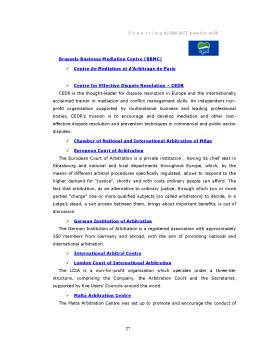Extras din proiect
BRIEF
I.THE SELECTION AND CONTRACTING OF THE FOREIGN PARTNERS
1. The partners selection
2. The delivery availability
3. Marketing aspect
4. Duration
5. Documentation: inquiry letter and offer letter
II. CONTRACTING
III. RESOLUTION OF THE CONTRACT
IV. THE COMMERCIAL OPERATIONS
a. The order letter received from Mercator
b. Order confirmation
c. Transport
d. Commercial documents
1. Proforma
2. Invoice
e. Letters of Credit
V. FINANCIAL ESTIMATION
Bibliography
BRIEF
Albalact. The export decision
Romanian milk and dairy products market
Nowadays, the Romanian market is underdeveloped due to the low purchasing power a dire lack of consumer education. The entire Romanian adult population grew up with, and acquired a taste for, dairy and food products before 198911. Apart from the size of the wallet, the fact that most people are still used to either the watered-down, no-alternative milk surrogate (that was ubiquitous before 1989), or the "countryside" unprocessed milk (that many still consider to be the only healthy choice), explains why the UHT milk, with its specific, new taste, does not yet rank highly in the country's adult consumer preferences.
None of today's milk brands invests any noticeable resources into educating consumers about the many qualities (regarding taste and going well beyond it) of processed milk, with the ultimate aim of enlarging their consumer base. Low profit margins do not stand as a viable explanation for this apathy and I believe that such an effort could be a serious opportunity for a brand, either new or existing, to position itself. It may not be indeed that easy to exploit, but it would be based on an objective characteristic of the product the consumer could immediately perceive and gauge.
The annual per capita milk consumption in Romania is much below the European average: 6.7 litres of processed milk, compared to the European average of 65-70 litres. The annual milk production amounts to 5.5 billion litres, out of which only 1.1 billion litres are processed, 1.3 billion litres are sold unprocessed, and a whooping 2.9 billion litres are marked as individual consumption and losses. During the negotiations with the EU, Romania was assigned an annual production quota of 3.3 billion litres of milk, out of which 1.2 billion litres are to be industrially processed.
Similar to the whole Romanian industry, the food and beverages sector came under the effect of growing domestic demand. Food sales through specialised stores increased by nearly 30% y/y in Jan-Aug, according to the statistics office. This may overstate the growth in food sales, but there are other evidences (8% real growth in wages, strong net consumer credit flow, increased expectations for higher revenues) that indicate that the market for consumer goods is expanding at high rates. The households' consumption accelerated to 12.7% y/y in Q2 from 10.9% y/y in Q1 this year, according to the GDP detailed statistics. This is well above the GDP growth and the differential generates widening trade deficit. The trade deficit in the area of food goods already exceeded EUR 1bn in Jan-Aug, according to our calculations, or 1% of full year's GDP.
The Romanian consumer milk market mirrors closely the current standard of living in the country. In 2004, barely 1.5 billion litres were sold, spread across the following three major types of milk:
- UHT (ultra high temperature) milk
- Pasteurized milk which, together with UHT milk, amounts to around 10% of the total quantity of consumer milk sold in Romania
- Unprocessed (raw) milk, which is rather unhealthy, but nevertheless traditionally popular, as it still represents 90 percent of all the milk sold in Romania.
This third type of milk ensures the basic income of many individual producers and is completely ignorant of, as well as insensitive to, modern trading techniques such as branding. The UHT and pasteurized milks are the turf of a relatively small number of processing companies. Genuine brands only exist in the case of UHT milk, probably as a result of a higher retail price that is able to support a decent marketing budget.
Apart from consumer milk, the Romanian dairy products market is fairly diversified, but there are very few players that can claim leadership in more than one product category. As far as UHT milk is concerned, the all-Romanian Albalact is a recently successful competitor of the more established Dorna Lactate and Friesland.
Albalact
Albalact is one of the 5 milk and dairy products in Romania. The company was founded in 1975, became a joint stock company in 1990 and a private company in 1999.
The company counts a 400 number of employees and, at the moment, it is listed on Rasdaq. The types of products Albalact produces and develops are:
- UHT milk (Fulga, Zuzu);
- butter
- yoghurt;
- powder milk;
- cheese products.
In 2005, Albalact could pride itself with a turnover of over 16.5 mil. EUR and a net profit of 825.000 EUR.
A medium-sized, independent, Romanian company owned by a private investor, Albalact has recently entered the Romanian UHT milk market with its Fulga brand. This company also sells pasteurized milk, fresh products, and cheese, under the brand name Albalact. Thanks to a fast-learning brand management team supported by an appropriate brand communication budget, Fulga enjoys excellent awareness countrywide and has rapidly accumulated a strongly positive brand equity.
Preview document
Conținut arhivă zip
- Proiect Albalact.doc










































